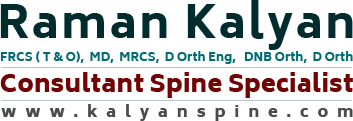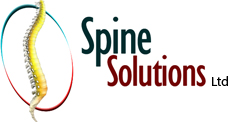What is Scheuermann’s Kyphosis?
Scheuermann’s kyphosis is a deformity of the spine that develops during growth. It can be considered as increased kyphosis. Kyphosis is the C-shaped curving of the spine and is also known as hunchback. This deformity occurs in the junction between the thoracic region and lumbar sections of the spine or in the chest region. However, it does not affect the spinal cord or nerve roots. It is commonly observed in males in their adolescence.
Causes of Scheuermann’s Kyphosis
The exact cause of Scheuermann’s kyphosis is not known, but it is caused due to the abnormal growth of the spine. The front of the spine stops growing, while the back of the spine continues to grow, forming a wedge-shaped vertebra. This condition may be congenital or may be developed because of osteoporosis at a younger age, due to heavy lifting and posture problems.
Symptoms of Scheuermann’s Kyphosis
The most commonly occurring symptoms include pain and characteristic C-back. In some cases, no significant symptoms will be evident. Symptomatic pain can be relieved with non-steroidal anti-inflammatory drugs (NSAIDs) such as ibuprofen but will not help to bring back the correct posture of the spine.
Impact of Scheuermann’s Kyphosis
This condition can lead to herniated thoracic disc, a condition in which the contents of the disc material leaks out.
Diagnosis of Scheuermann’s Kyphosis
Your doctor will conduct a detailed physical examination, which includes range of motion tests, palpitation and Adam’s forward bending tests. After the physical examination is complete, further imaging tests include X-ray, myelography (to check if the spinal cord is affected) and magnetic resonance imaging (MRI) scan. Additionally, an X-ray of the pelvis and wrist are ordered to determine the bone age to understand skeletal maturity.
Treatment of Scheuermann’s Kyphosis
Treatment for Scheuermann’s kyphosis is based on your age, severity of the curve, and any associated neurological problems.
Non-surgical Treatment of Scheuermann’s Kyphosis
Your doctor may suggest physical therapy that includes strengthening exercises and postural training, which help to strengthen the spinal muscles and improve the posture. Braces can be recommended if the results from physical therapy are not satisfactory. The commonly used brace is ‘Milwaukee brace’. This brace is made up of plastic, which attaches itself to the waist. The pressure exerted by the upright bars present in the brace helps to straighten the spine.
Surgical Treatment of Scheuermann’s Kyphosis
Surgery is ideal when non-surgical treatment does not correct the posture of the spine. It is performed to straighten the spine and relieve pain and is done in two procedures:
- In posterior fusion, two or more bones are fused together to form one bone.
- Combined fusion is the fusion of two surgeries: anterior and posterior of the spine.
- In the first part, the ligaments of the spine are cut, the problematic disc is removed, and filled with bone grafts which help in the bone growth.
- In the second part, spine muscles are cut and spread apart, metal rods with hooks are inserted along the side of the spine and bone grafts are inserted. The rods hold the spine to help the bone grafts in healing.
Rehabilitation after Scheuermann’s Kyphosis Treatment
After the surgery, a rehabilitation program is suggested, which includes strengthening and stretching exercises that help to release the tension of the spine muscles and improve blood circulation. These exercises must be performed regularly to obtain better outcomes.

